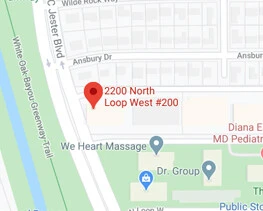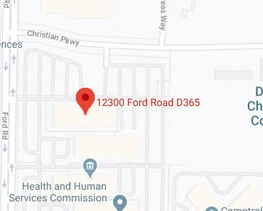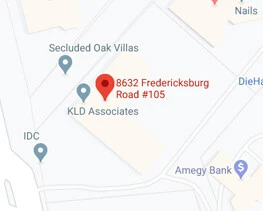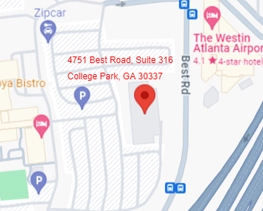

The personal property information you provide the tax assessor is not only important; it’s critical. Tax assessors would like to have a summary of the purchase price / acquisition cost of “property” acquired by year for perhaps eight categories of property. In addition, there are requests for information on inventory and work in progress. The assessor wants to know the amount spent on any tangible items such as furniture, equipment, computers, inventory, manufacturing work in progress, and other types of property depending upon location. However, in some states, including Texas, the property owner may provide an opinion of value for the eight categories of items. This step is critical in determining how the taxation process evolves.
Assessors also want you to include freight, setup cost and special-purpose buildings to house equipment. None of these should be rendered as personal property.
Providing a value allows the taxpayer to address several issues up front without having to battle the appraisal district: 1) the depreciation schedule to use to estimate value and 2) the allocation of tangible personal property and intangible personal property. Intangible personal property appears to be exempt from property taxes with the exception of a few states that apply a tax to bonds. However, for our purpose of valuing personal property for property taxes, we need to separate tangible and intangible personal property.
In theory, it is simple to separate tangible and intangible personal property. However, when property is purchased the price is not allocated by tangible and intangible. Can a reasonable person dispute that a portion of the acquisition cost of an Apple watch, iPhone, Cisco phone system, copier or computerized machining equipment does not include intangible personal property? What are the actual costs to manufacture an Apple watch versus the retail price? Let’s review a $2 million Cisco phone system which included a five-year service contract. After five years, the system is essentially worthless unless the owner agrees to another long-term service contract, at perhaps $200,000 per year. The cost of the maintenance contract was about half the cost of the original equipment. What is the tangible property versus the intangible property in a $2 million phone system? Most appraisal districts would put a residual value of twenty percent or $400,000. In reality, it would be unreasonable to expect more than $10 to $50,000.
Using the valuation model from McLennan County Appraisal District in Waco, Texas, let’s review the appraisal district’s value of a $2 million phone system:
| Assessed Value | Property Taxes | |
| Year 1 | $1.8 million | $48,600 |
| Year 2 | $1.6 million | $43,200 |
| Year 3 | $1.4 million | $37,800 |
| Year 4 | $1.2 million | $32,400 |
| Year 5 | $1 million | $27,000 |
| Year 6 | $800,000 | $21,600 |
| Year 7 | $600,000 | $16,200 |
| Year 8 | $400,000 | $10,800 |
| Year 9 | $400,000 | $10,800 |
| Year 10 | $400,000 | $10,800 |
| Year 11 | $400,000 | $10,800 |
| Year 12 | $400,000 | $10,800 |
| Year 13 | $400,000 | $10,800 |
| Year 14 | $400,000 | $10,800 |
| Year 15 | $400,000 | $10,800 |
| Year 16 | $400,000 | $10,800 |
| Year 17 | $400,000 | $10,800 |
| Year 18 | $400,000 | $10,800 |
| Year 19 | $400,000 | $10,800 |
| Year 20 | $400,000 | $10,800 |
| Total Personal Property Taxes | $367,200 | |
Is $367,200 in property taxes reasonable for a phone system that “cost” $2 million? Remember, the cost includes: warranty, service agreement for five years at about $200,000 per year, trade secrets necessary to manufacture the phones, and some plastic, metal and silicone. Half of the cost is the maintenance agreement. However, if you are not careful this cost will be included as long-life equipment. Of the remaining half of the cost, how should it be allocated between tangible (plastic, metal and silicone) and intangible (software, trade secrets, etc.)? Cisco’s cost of goods sold is 37% of revenue (for year ending mid-2016), and that would include their expenses for service and warranty. If the service contract was $200,000 per year for five years, about $1 million would be for the phone system without deducting other intangibles. Their net profit margin is twenty-five percent. One approach to determine the value of the tangible personal property is to calculate the cost to manufacture and add a reasonable allowance for profit. This indicates a value for the tangible components of the phone system of $462,500 ($1 million after deducting service contract times thirty-seven percent cost of goods sold times 125% to allow for profit). This cost for tangibles is only twenty-three percent of the total cost of $2 million.
If you are able to render market value, allocate the cost of different types of property between tangible personal property and intangible personal property. Then estimate the value of the tangible personal property based on its age, functionality and condition.
If you can’t render market value of the tangible personal property, you either should render what is required (typically cost by year) or not render and risk the consequences. The penalties of not rendering vary from state to state; they are typically a percentage of taxes owed. Texas is on the low end at ten percent and Oregon is on the high end at fifty percent. In practice, the ability to work with assessors varies sharply within a state. Rendering your cost of acquisition by category by year will generate a predictable result. Generally, people in business like a predictable result.
However, the result of rendering cost is that your personal property tax assessment will likely be two to five times the correct value. The primary exceptions are inventory and manufacturing work-in-progress. There is typically less over-valuation for inventory and work-in-progress based on traditional practice.
Appraisal districts, also known as assessors, are government bureaucracies that function based on rules and protocol. We reviewed most state depreciation schedules and manuals for personal property valuation published by states and appraisal districts. They do not seem to make any effort to: 1) separate tangible property from intangible property and 2) appear to consistently use depreciation schedules based on physical-life depreciation tables not related to market value. In addition to not using tables somewhat linked to market value, appraisal districts are not set up to make adjustments for functional or external obsolescence. In addition, they inappropriately encourage property owners to include freight, set-up and specialized buildings to house equipment in their cost.
Your property taxes will be aggressively protested every year by the #1 property tax firm in the country. If your taxes are not reduced you PAY NOTHING, and a portion of the tax savings is the only fee you pay when your taxes are reduced! Many FREE benefits come with enrollment.
When you submit your enrollment, you understand this is a risk free offer to you. If your taxes are not reduced you PAY NOTHING, and a portion of the tax savings is the only fee you pay when your taxes are reduced.

poconnor-houston-office
(Corporate)
2200 North Loop West,
Suite 200 Houston, TX 77018
713-686-9955

poconnor-dallas-office
(By appointment only)
12300 Ford Rd., Suite #414
Dallas, TX 75234
972-243-9966

poconnor-san-antonio-office
(By appointment only)
8632 Fredericksburg Rd Ste 105
San Antonio TX 78240
210-226-0829

poconnor-Georgia-Office
(By appointment only)
4751 Best Road, Suite 316
College Park, GA 30337
770-835-4126